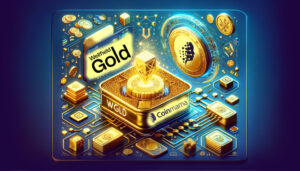Blockchain is the underlying technology that powers most cryptocurrencies such as Bitcoin, Ethereum, Cardano, Solana, Bitcoin Cash, etc. A blockchain is essentially a public ledger that keeps a record of all transactions that happen on a cryptocurrency network. Blockchains are maintained and upheld by a decentralized network of nodes. Each node keeps a record of the blockchain. There can be hundreds, thousands, or even tens of thousands of nodes or more for a single blockchain.
Key Takeaways
- Blockchain technology is the underlying technology that powers most cryptocurrencies.
- Blockchains are public ledgers that keep records of transactions that happen on the network of a cryptocurrency.
- Blockchain technology is called “blockchain” technology because groups of transactions are added to the network in “blocks” that form a never-ending “chain” of transactions.
- Blockchains help cryptocurrencies to remain decentralized and to avoid centralized control.
Why is it Called “Blockchain?”
Blockchain technology is called “blockchain” because groups of transactions are added to the ledger in “blocks.” Usually, a new blockchain is added to a blockchain’s ledger every few minutes. For example, for the Bitcoin blockchain, a new block is added to the blockchain roughly every ten minutes.
So, as more and more blockchains are added, it forms a never-ending “chain” of transactions – hence the name, “blockchain.” Blockchains are open source and public meaning that anyone can view the transactions that have occurred on a particular blockchain.
However, this does not mean that you can see which person sent money to which other person. This is because identities are hidden for blockchain participants through cryptography. So, if you look on a blockchain’s ledger you might be able to see that person x sent 1 Bitcoin to person y. But the people would only be identifiable through their wallet addresses which are usually just a long string of numbers and letters. A wallet address looks something like this:
Xopipj98jids887ewrhkwer9er98heri9.
How Are Blocks Validated?
In order for a block of transactions to be added to a blockchain for a given cryptocurrency, the block has to be validated to achieve “consensus” or an agreement of authentication. There are two primary methods for validating blocks: proof-of-work and proof-of-stake. Proof-of-work is a process in which special computers running special software compete to solve a highly complex mathematical equation.
Whichever computer solves the equation first gets to add the transaction to the blockchain. In this way, blocks are validated. The person who owns the computer that successfully validates a block is usually paid in the form of the native cryptocurrency for the blockchain it is authenticating transactions for.
Proof-of-stake is a similar process. However, with proof-of-stake, instead of computers competing to solve mathematical equations, people who own cryptocurrency put up some of their cryptocurrency as collateral in order to become a “validator” for the blockchain. This process is known as “staking.” When it is time for a new block to be added to the blockchain for proof-of-stake blockchain, a validator is chosen at random from the pool of validators to validate the transaction.
The validator receives a reward for this. Proof-of-stake is viewed favorably by many people because it is less energy-intensive compared to proof-of-work, and is therefore better for the environment. Ethereum, the second-largest cryptocurrency by overall market capitalization is currently in the process of switching from proof-of-work to proof-of-stake. Bitcoin, however, the largest cryptocurrency by market cap still uses proof-of-work.
Why Is Blockchain Important?
The main reason why blockchain is important is because it is what prevents cryptocurrencies from being double-spent. In other words, blockchain prevents counterfeiting and fraud because with blockchain technology, every single transaction is publicly recorded and has to be validated before it can occur. So, it is blockchain technology that upholds the integrity of cryptocurrency networks.
Without blockchain technology, cryptocurrencies wouldn’t work because people would be able to create and spend an endless amount of them. Blockchain technology is a technological breakthrough of epic proportion. It is one of the most significant financial and technological inventions of all time. In fact, it is said to be the most significant technological breakthrough since the internet was invented in the early 1980s.
Because of blockchain a brand new form of money was able to be invented. In the 10-13 years since cryptocurrency has existed, it has already caused major disruption in both the finance and technology industries. It has spawned the creation of a brand new asset class that has already grown to be worth over one trillion dollars.
How Does Blockchain Enable Decentralization?
Blockchain enables decentralization because anyone can create a node for a particular blockchain network. This means that there can be tens of thousands or more copies of a blockchain’s full transaction scattered all across the world. Not only does this make blockchain immune to things like natural disasters wiping out a data center, but it also prevents any one party from completely controlling the blockchain.
Because blockchain networks are distributed all around the world, it is impossible for them to have one single point of failure. Compare this to a company that keeps all of its data stored in a data storage center near a river. If the river floods and destroys the data storage center, all of the data could be lost.
In order for the data of blockchain networks to be destroyed, all of the computers around the world that run nodes for the blockchain would have to be destroyed. This is seemingly impossible. Therefore, blockchains are incredibly resilient to destruction.
What is Next for Blockchain?
To date, blockchain has primarily been used for cryptocurrencies, to serve as a distributed ledger. However, other use cases for blockchain are springing up. For example, blockchain is now being used to track and authenticate transactions along supply chains. It is also being used to safely store and transfer medical data for patients.
Further, with the rise of NFTs, blockchain is being used to help create a brand new form of art and collectibles in which tokens tied to real unique assets like digital illustrations are stored and maintained on blockchains.
In short, the potential of blockchain is really just beginning to be discovered. In the coming years and decades, it is likely that even more use cases for blockchain technology will be discovered. However, it is very important to note that in the early days of blockchain, many people weren’t sure that it was even going to work at all. Thanks to its 13+ year history, we can now safely say that it does work. That is extremely significant.


